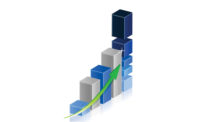2024 State of the Dairy Industry: U.S. Dairy Exports
A sunny outlook: United States is on track for record cheese exports in 2024.

Credit: herraez / iStock / Getty Images Plus
The outlook for U.S. dairy products in 2025 varies by product. The two with the most-clear trajectories are cheese and skim powders (nonfat dry milk (NFDM)/skim milk powder (SMP)). U.S. dairy exports are typically a function of available supply in the U.S., supply in other major exporting regions, import demand, as well as prices and price spreads.
Available supply in the U.S. looks like it will be the main drivers for cheese and NFDM/SMP, while the other products will be driven by a combination of the other factors.
First, we need to start at the level of milk production. If you look at “milk production” as reported by the United States Department of Agriculture (USDA), it has been running below year-ago levels from late 2023 into late 2024. Feed costs have continued to drop during 2024 and milk prices have shot up to profitable levels and we should see better growth going into 2025.
A lack of replacement heifers (the young animals just coming into the herd for the first time) will probably keep the production expansion weak compared to previous expansions, but the production outlook for 2025 looks better than 2024. The other thing to keep in mind is that the milk production data from the USDA does not make any adjustment for the increasing amount of fat and protein in the milk.
Most dairy farmers in the U.S. are paid based on the amount of fat and protein that they produce, not the pounds of water produced by their cows, so they are increasingly focusing their breeding and feeding efforts on producing more milk solids even if that means that the total pounds of milk (solids plus water) goes down.
How will the increased milk (solids) supply be used? We have a record amount of new cheese plant capacity that has been built, with most of it ramping up between the fourth quarter of 2024 and the first half of 2025. It’s reasonable to assume we will see good growth in cheese production during 2025, and with domestic demand for cheese running a little weak, it looks like we’ll need to boost exports to clear all of the expected production. The good news is that we’re on track for record cheese exports in 2024 and forward offers into Q1 are currently very competitive against Europe, so we should be able to keep exports moving without too much trouble in the first half of 2025.
While cheese has consistently been absorbing more and more of the U.S. milk supply, we are well into a third consecutive year of declining NFDM+SMP production, and I expect production to be down again in 2025. End users in the U.S. have increasingly been using condensed or ultra-filtered milk or milk protein concentrates instead of NFDM, so processors have been pushing milk into those products. Even with better milk production growth in 2025, that trend toward pushing skim into other products will likely continue and that will limit export availability from the U.S.
Show me the whey
The outlook for whey products is more murky and uncertain. Both export and domestic demand for high-protein whey products has been strong this year and it sounds like it will stay strong into early 2025. We could see a little more supply availability from the new cheese plants too. The tricky part is that the strong demand has pushed prices up to levels that typically kill off some demand.
For now, U.S. prices are still competitive against Europe and demand seems to be holding together well, which would argue for some continued growth in high-protein whey powder exports in 2025, but the growth will probably be slower than in 2024. I’m nervous that we might kill off more demand than expected at these price levels.
With the high-protein whey products seeing strong demand and high prices, processors have been shifting away from producing low protein products like sweet whey powder and WPC34. The tighter supply of those products has helped to push their prices higher too. U.S. dry whey prices are being undercut by product in Europe and permeate is a cheaper option for end users who are producing animal feed that might limit the growth for dry whey exports and WPC34 out of the U.S. in 2025.
Butter is the biggest unknown with conditions changing weekly. Early in 2024, the U.S. was looking tight and the price was high enough to limit interest in U.S. butter. However, U.S. butter production has turned out much better than expected, stocks have built up and the U.S. was by far the lowest price across the major exporters in October. If that continues, we should see much stronger butter exports in early 2025, but the story could change quickly.
Overall, I think the export outlook for U.S. dairy is positive in 2025. We’ll have more milk (solids) available. U.S. pricing is looking relatively competitive on a number of products and global demand has been better than expected throughout 2024.
The trading of derivatives such as futures, options, and over-the-counter (OTC) products or “swaps” may not be suitable for all investors. Derivatives trading involves substantial risk of loss. Past results are not necessarily indicative of future results.
Looking for a reprint of this article?
From high-res PDFs to custom plaques, order your copy today!







